Cozydoor, your trusted partner in construction, understands the complexities of this process and is here to guide you. We’ll dive into the world of raw ingot aluminum, outlining its benefits, sourcing strategies, and best practices for cannery production. We’ll equip you with the knowledge and tools to make informed decisions, streamline your projects, and achieve remarkable results.
Role of Raw Ingot Aluminum in Cannery Production
Imagine a world without aluminum cans, a world where your favorite beverages and packaged goods arrive in bulky, fragile containers. Aluminum, thanks to its exceptional properties, plays a crucial role in modern cannery production.
Properties of Aluminum Ideal for Can Making
Aluminum possesses several properties that make it particularly suitable for can manufacturing:
- Lightweight: Aluminum is significantly lighter than other metals, reducing shipping costs and energy consumption during transportation.
- Corrosion Resistance: The natural oxide layer on aluminum protects it from corrosion, ensuring that cans maintain their integrity over time.
- Malleability: Aluminum can be easily shaped and formed into various designs without compromising its strength.
- Recyclability: Aluminum is 100% recyclable without loss of quality, making it an environmentally friendly choice.
These properties not only enhance the functionality of aluminum cans but also contribute to their aesthetic appeal. Canners can apply various coatings and prints to create visually appealing products that attract consumers.
Why Canneries Choose Aluminum
Canneries opt for aluminum due to its numerous advantages over other materials:
- Cost Efficiency: With competitive pricing from suppliers like Cozydoor, businesses can minimize material costs while maintaining quality.
- Supply Chain Reliability: Aluminum suppliers often have robust logistics networks that ensure timely delivery, helping canneries meet production deadlines.
- Safety Standards: Aluminum is non-toxic and safe for food contact, which is critical for maintaining health regulations.
- Design Flexibility: The ability to create lightweight yet strong cans allows for innovative designs that enhance brand visibility.
By choosing aluminum as their primary material, canneries can optimize their production processes while ensuring compliance with safety regulations.
Sourcing and Processing Raw Aluminum Ingots for Canneries
Finding the Right Aluminum Supplier
Selecting a reliable supplier is crucial for ensuring quality and consistency in aluminum ingot procurement. Here are key factors to consider:
- Reputation: Look for suppliers with a proven track record in the industry.
- Quality Certifications: Ensure that the supplier meets international quality standards.
- Competitive Pricing: Evaluate multiple suppliers to find the best price-to-quality ratio.
Cozydoor offers a range of high-quality aluminum ingots tailored to meet specific industry needs. By collaborating with reputable suppliers, canneries can secure materials that align with their operational goals.
Transportation and Logistics of Aluminum Ingots
Efficient transportation and logistics are vital in minimizing delays and reducing costs associated with raw material procurement. Factors to consider include:
- Shipping Methods: Evaluate various shipping options (e.g., truck, rail) based on cost-effectiveness and delivery speed.
- Inventory Management: Implement systems to monitor stock levels and forecast demand accurately.
- Local Suppliers: Consider sourcing from local suppliers to reduce transportation times and costs.
By optimizing logistics processes, canneries can improve overall efficiency and maintain production timelines.
Preparing the Ingots for Can Production
Before using aluminum ingots in can production, they must undergo specific preparation steps:
- Melting: Ingots are melted in furnaces at high temperatures to create molten aluminum.
- Alloying: Additional metals may be added to achieve desired properties (e.g., strength or ductility).
- Casting: The molten aluminum is poured into molds to form sheets or other shapes required for can manufacturing.
These preparation steps ensure that the aluminum meets technical specifications necessary for high-quality can production.
Read more Blog & New:
The Can Manufacturing Process
Rolling and Shaping the Aluminum Sheet
The first stage in can manufacturing involves rolling the prepared aluminum into thin sheets. This process includes:
- Rolling Mills: Large machines compress the aluminum into sheets of varying thicknesses.
- Quality Control: Continuous monitoring ensures that sheet thickness meets specifications.
This stage is critical as it sets the foundation for subsequent manufacturing processes.
Forming the Can Ends and Necks
After rolling, the sheets are cut into circles known as blanks. These blanks are then shaped into cans through a series of processes:
- Drawing: Blanks are drawn into cup shapes using hydraulic presses.
- Trimming: Excess material is trimmed away to ensure uniformity.
This precision engineering guarantees that each can meets stringent quality standards.
Coating and Printing the Cans
The final stage involves applying coatings and printing designs on the cans:
- Coatings: Protective coatings are applied to enhance durability and prevent corrosion.
- Printing: High-quality printing techniques allow brands to create eye-catching designs that resonate with consumers.
These finishing touches not only protect the product but also enhance its marketability.
Ensuring Quality and Efficiency in Aluminum Can Production
Quality Control Measures Throughout the Process
Implementing robust quality control measures at every stage of production is essential for maintaining high standards:
- Inspection Protocols: Regular inspections help identify defects early in the manufacturing process.
- Testing Procedures: Conduct mechanical tests on finished cans to ensure they meet safety standards.
By prioritizing quality control, canneries can reduce waste and improve overall product reliability.
Optimizing Efficiency and Minimizing Waste
Efficiency optimization strategies include:
- Lean Manufacturing Techniques: Implementing lean principles helps streamline operations and reduce waste.
- Employee Training: Investing in training ensures workers are skilled in operating machinery effectively.
These strategies not only lower production costs but also enhance product quality.
Maintaining Cannery Equipment for Optimal Performance
Regular maintenance of equipment is critical for ensuring smooth operations:
- Scheduled Maintenance: Establish a routine maintenance schedule to prevent breakdowns.
- Upgrades: Invest in modern technology to improve efficiency and reduce downtime.
By maintaining equipment properly, canneries can maximize productivity while minimizing operational disruptions.
The Sustainability Cycle
The Aluminum Recycling Process
Aluminum recycling is a key aspect of sustainability within the industry:
- Collection: Used aluminum cans are collected from consumers.
- Sorting and Cleaning: Cans are sorted by type and cleaned to remove contaminants.
- Melting Down: Recycled cans are melted down into molten aluminum ready for remanufacturing.
This process significantly reduces energy consumption compared to producing new aluminum from ore.
The Environmental Benefits of Aluminum Recycling
Recycling aluminum offers numerous environmental benefits:
- Energy Savings: Recycling uses only 5% of the energy required to produce new aluminum.
- Waste Reduction: Diverting used cans from landfills minimizes environmental impact.
- Resource Conservation: Recycling reduces demand for bauxite mining, preserving natural resources.
By embracing recycling practices, canneries contribute positively to environmental sustainability while enhancing their brand image as eco-friendly businesses.
In conclusion, understanding the role of raw ingot aluminum cannery processes is essential for directors and project managers in industrial construction seeking reliable suppliers like Cozydoor.

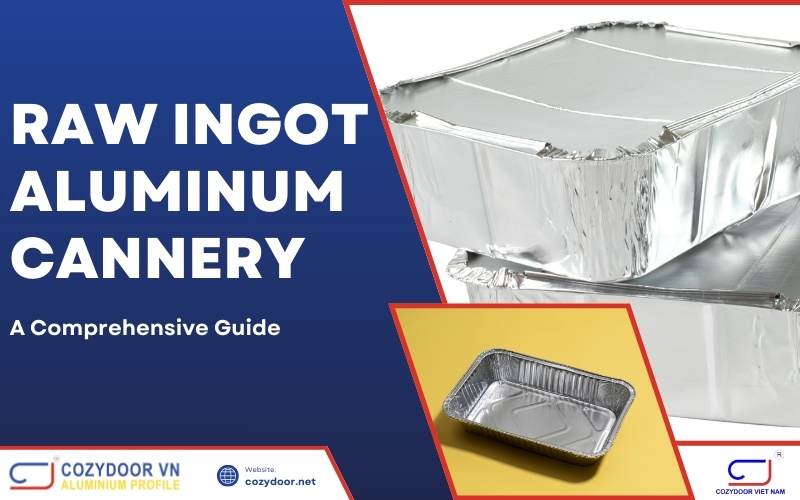
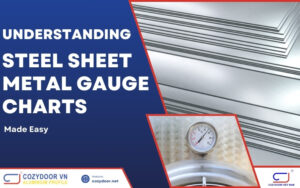
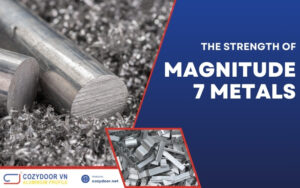
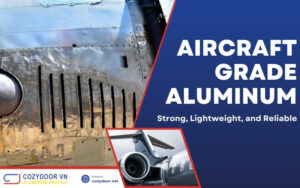
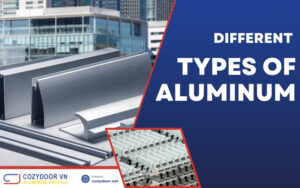
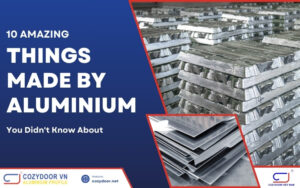

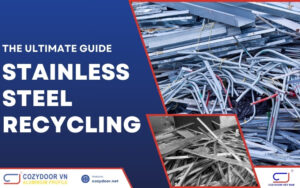

Understanding 6061 T6 Aluminum: Key Features Explained
Are you a construction project manager seeking a robust, versatile, [...]
Nov
Mastering the Conductivity of Al for Optimal Project Success
One key factor often overlooked is the strategic selection of [...]
Nov
Aluminum Plate: The Key to Modern Construction Success
Cozydoor, a leading provider of high-quality aluminum plate materials, understands [...]
Nov
Alum Can Recycle: Slash Construction Waste
In the fast-paced world of industrial construction, project managers and [...]
Nov
5052 Aluminum vs 6061: The Ultimate Guide for Construction Pros
Unlock the secrets to building smarter, stronger, and more cost-effective [...]
Nov
The Major Aluminum Producers You Should Know About
This comprehensive guide will equip you with the insights you [...]
Nov
Is Aluminum a Metal? Unlocking its Potential for Modern Construction
Aluminum’s remarkable properties have revolutionized industries, and its impact on [...]
Nov
5 Reasons Why Aluminum Sheet is the Smart Choice
Imagine a material that blends strength with lightness, resists corrosion, [...]
Nov